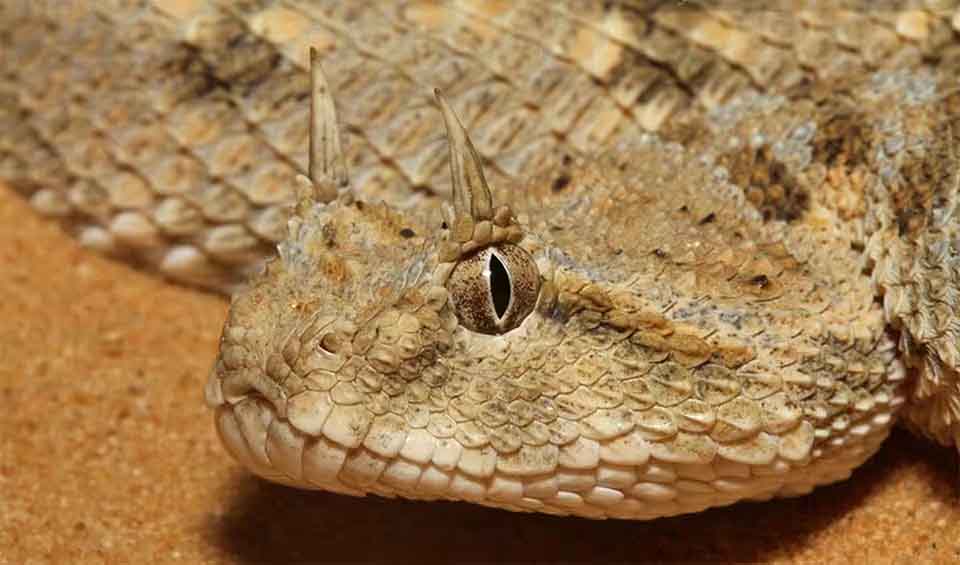The Saharan horned viper, also known as Cerastes cerastes, is a fascinating snake that lives in the deserts of North Africa and the Middle East. This snake is famous for its distinctive horns above its eyes, which give it a unique and somewhat menacing look. Its body is thick and covered in rough scales, which help it blend in with the sandy environment. The most striking feature of this snake is the pair of horns above its eyes. These horns are made of modified scales and can vary in size. Some horned vipers might not have horns, but they are still the same species.
This viper thrives in the harsh conditions of the desert. It prefers sandy and rocky areas where it can easily camouflage itself. During the day, the Saharan horned viper hides under rocks or buries itself in the sand to escape the scorching heat. At night, it becomes active and hunts for food.
The viper’s sidewinding motion is one of its most remarkable behaviors. This unique way of moving allows the snake to travel quickly across loose sand without sinking. By moving sideways, the snake can maintain balance and conserve energy in the challenging desert terrain.
While the Saharan horned viper’s venom is potent, it is not usually deadly to humans. The venom contains toxins that can cause pain, swelling, and tissue damage. However, bites are rare since these snakes are not aggressive and tend to avoid human contact. If threatened, the viper will hiss loudly and puff up its body to appear larger, hoping to scare away potential predators.
Distribution
 Algeria
Algeria Chad
Chad Egypt
Egypt Israel
Israel Jordan
Jordan Libya
Libya Mali
Mali Mauritania
Mauritania Morocco
Morocco Niger
Niger Saudi Arabia
Saudi Arabia Sudan
Sudan Tunisia
Tunisia Yemen
YemenAnything we've missed?
Help us improve this page by suggesting edits. Glory never dies!
Suggest an editGet to know me
Terrestrial / Aquatic
Altricial / Precocial
Polygamous / Monogamous
Dimorphic (size) / Monomorphic
Active: Diurnal / Nocturnal
Social behavior: Solitary / Pack / Herd
Diet: Carnivore / Herbivore / Omnivore / Piscivorous / Insectivore
Migratory: Yes / No
Domesticated: Yes / No
Dangerous: Yes / No




